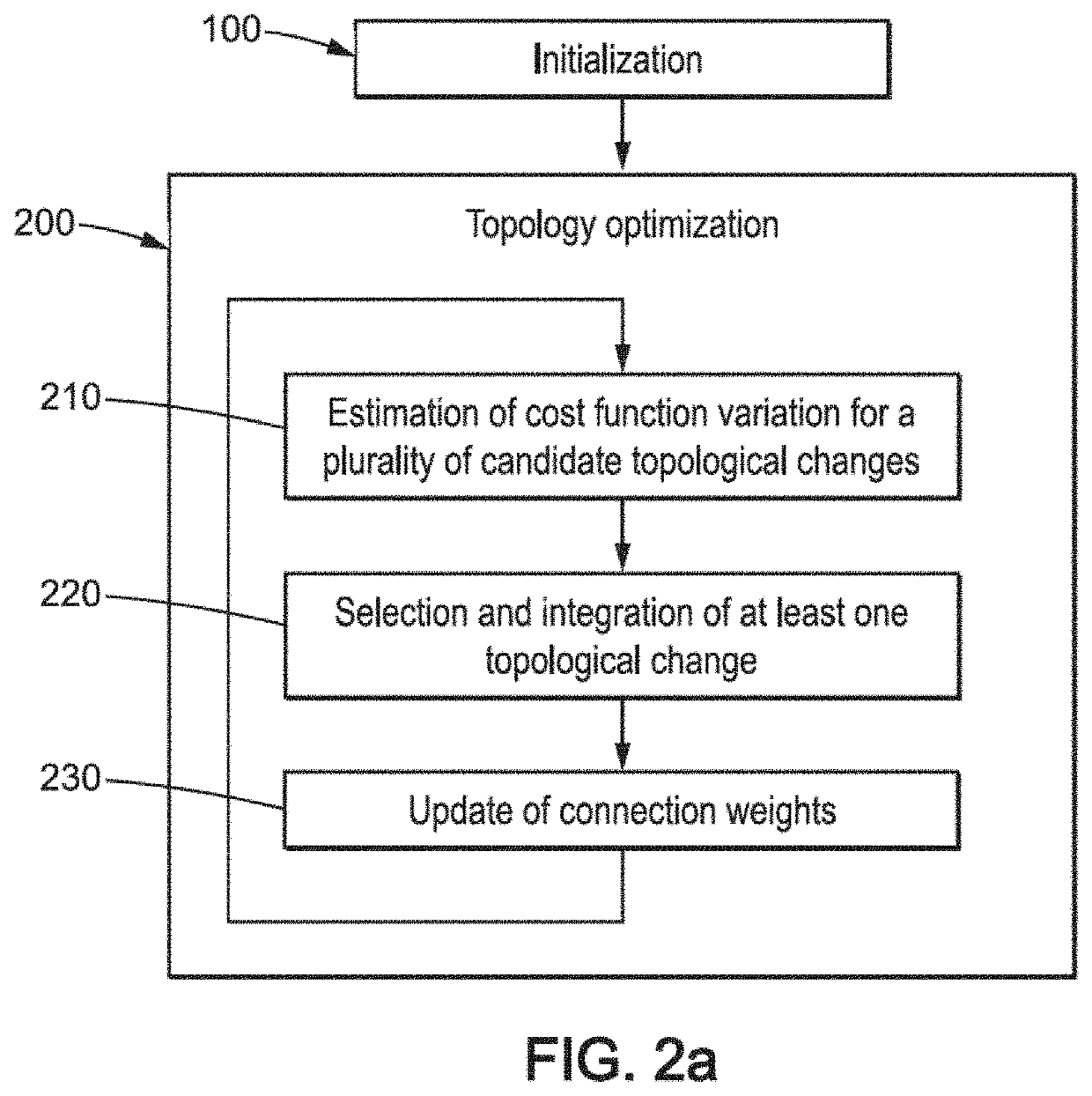Method for building a resource-frugal neural network
a neural network and resource-efficient technology, applied in biological neural network models, inference methods, instruments, etc., can solve the problems of large quantity of training data, large computational resources and long training time, and high computational intensity of execution of this type of neural network, so as to increase the autonomy of connected sensors, optimize data quantity, and improve precision
- Summary
- Abstract
- Description
- Claims
- Application Information
AI Technical Summary
Benefits of technology
Problems solved by technology
Method used
Image
Examples
Embodiment Construction
Computing Devices
[0089]A method for building a neural network intended to be run on a destination computing unit 2 will now be described. With reference to FIG. 1a, the destination computing unit 2 comprises a processing device 20 which is intended to implement all or part of the neural network once the latter is built. The destination computing unit may also comprise a memory 21 storing the configuration of the neural network to be executed.
[0090]In all that follows, the words “execution,”“assessment” and “inference” of a neural network are used as synonyms to designate the use of a trained neural network fed with input data to output a desired output corresponding to said input data.
[0091]The processing device 20 of the destination computing unit 2 can in particular include a central processing unit CPU, comprising at least one processor, microprocessor, controller or microcontroller. The processing device 20 can include at least one graphical processing unit GPU, or may be devoid...
PUM
 Login to View More
Login to View More Abstract
Description
Claims
Application Information
 Login to View More
Login to View More - R&D
- Intellectual Property
- Life Sciences
- Materials
- Tech Scout
- Unparalleled Data Quality
- Higher Quality Content
- 60% Fewer Hallucinations
Browse by: Latest US Patents, China's latest patents, Technical Efficacy Thesaurus, Application Domain, Technology Topic, Popular Technical Reports.
© 2025 PatSnap. All rights reserved.Legal|Privacy policy|Modern Slavery Act Transparency Statement|Sitemap|About US| Contact US: help@patsnap.com



